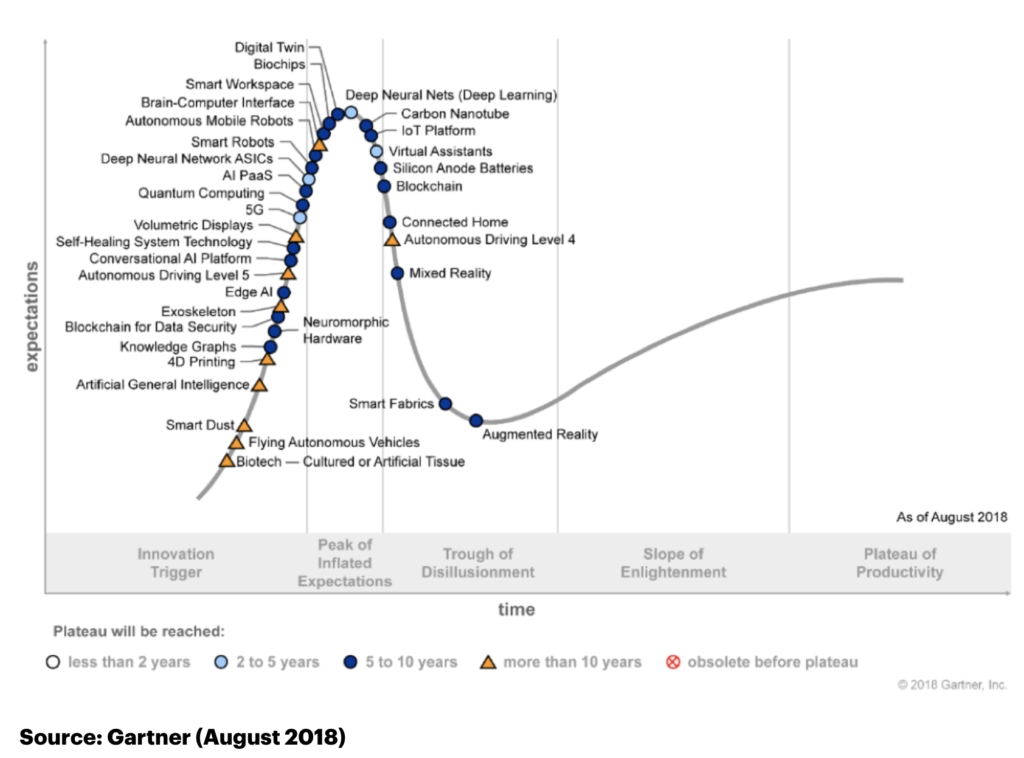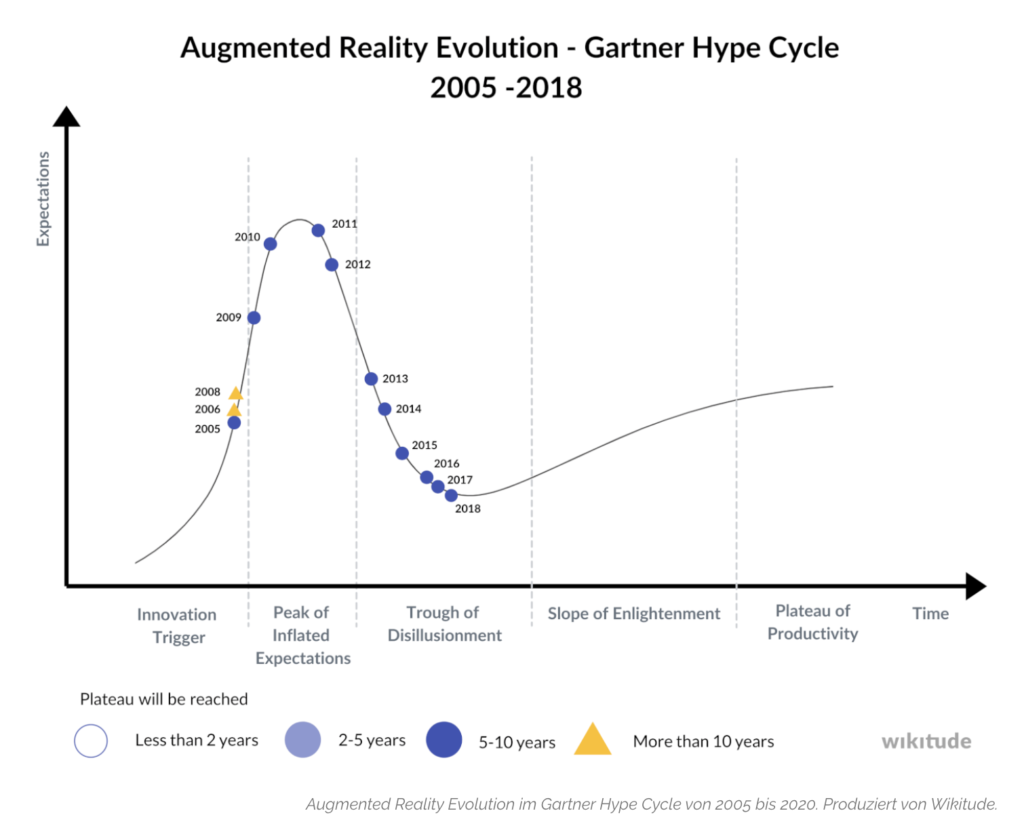The preliminary stage of Augmented Reality started already in 1968 at Harvard when Ivan Sutherland, computer scientist, created an AR head-mounted display syste. In the following years multiple universities and companies further developed the AR technologie first for digital displays and later also for warables.
While 2018 Augmented Reality was deep into the Valley of Tears, it disapeared on the Gartner Hype Cycle in 2020.

The Gartner Hype Cycle
The Gartner Hype Cycle is a methode for Executives but also interested person can navigate themselfs during this fast moving time no a days through the current hypes and new technologies. This helps to estimate risks and chances of upcoming technologies.
2005 was the first time that AR appeared on Gartner’s Hype Cycle. In 2018 Gartner still predicted it will take 5 to 10 years until it reaches the plateau of productivity.

So why did it disappear in 2020? Augmented Reality did not lose it’s potential, it just developed so fast that it is not an emerging technologie any more.
This means that AR has matured and ready to become an industry-proven technology in which executives can safely invest in to improve and innovate their businesses.
Gartner predicts that in the end of 2021 AR will be used by more than a third of all companies.
Sources
Augmented Reality aus Gartners Hype-Zyklus verschwunden – Wie geht es weiter?
Gartner Identifies Five Emerging Technology Trends That Will Blur the Lines Between Human and Machine